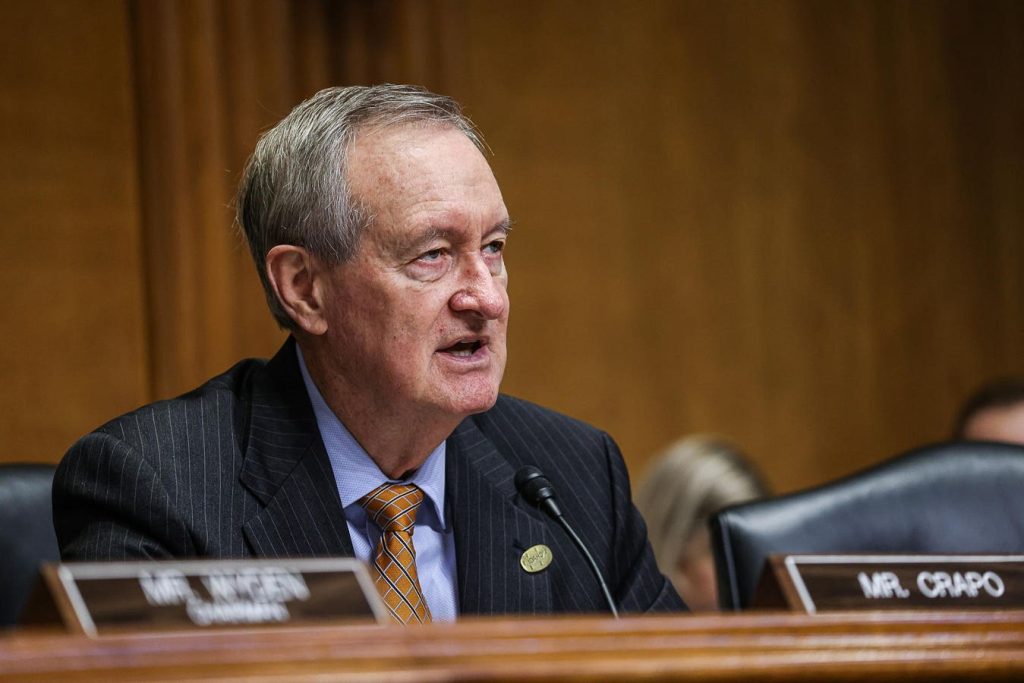WASHINGTON, DC – SEPTEMBER 17, 2024: Senator Mike Crapo, Ranking Member of the Senate Committee on … [+]
The fate of President-elect Trump’s ambitious income tax agenda will be decided in large part by two critical, and related, issues: Trump’s tariffs and the extent to which Congress pays for what are likely to be trillions of dollars in income tax cuts. And both could be subject to intense behind-the-scenes battles—among Republicans.
To understand why, you need to know a bit about the budget process: Because it normally takes 60 votes to pass legislation in the Senate, Trump and his narrow congressional majority will need to rely on the process known as budget reconciliation to pass much of his tax agenda.
Reconciliation comes with a raft of rules, but for now, focus on just three: Reconciliation bills can pass the Senate with a simple majority vote rather than that 60-vote majority needed to overcome a filibuster. At the outset, a budget resolution sets explicit spending and revenue targets that must be met. And the bill cannot increase the deficit beyond Congress’s normal 10-year budget window.
Tariff Pitfalls
With that out of the way, here are some of pitfalls Trump faces.
Start with the tariffs. Because Trump has proposed so many versions of these import taxes, it is impossible to know what he’ll really do. The Tax Policy Center has modeled a 60% tariff on China combined with either a 10% worldwide import tax or a 20% version. But most recently, Trump has threatened 25% tariffs on Canada and Mexico combined with additional tariffs on Chinese goods, as well as a 100% tariff on another group of trading partners.
Whatever version he chooses, the import taxes could raise trillions of dollars over 10 years. But that’s where it starts getting complicated.
If Congress enacts the tariffs through reconciliation, any new revenues could be used to finance some of the tax cuts it approves. But Trump doesn’t appear to want to wait for congressional action. And if he imposes the tariffs unilaterally, using them as an offset may not be so easy since congressional scorekeepers normally don’t count administrative actions in their budget estimates.
Republicans could try to shoehorn any tariff revenues into a reconciliation bill by granting Trump the authority to impose the levies. But it isn’t clear if the reconciliation rules allow such a move, or how giving the president authority he already has would be scored.
To Pay, Or Not To Pay?
Will Congress even worry about whether, and how, to pay for those tax cuts? The cost could be steep. Extending the 2017 Tax Cuts and Jobs Act (TCJA) would add more than $4 trillion to the deficit over the next decade.
And multiple tax cuts Trump proposed during the campaign could add another $4 trillion or $5 trillion to the price tag. They include lower corporate tax rates; tax free tips, overtime, and Social Security benefits; a new tax deduction for interest on auto loans; repeal of the cap on the state and local tax (SALT) deduction; and tax credits for family caregivers.
And that is where internal GOP politics will get complicated. Some Republicans, including incoming Senate Finance Committee Chair Mike Crapo (R-ID), see no need to pay for the tax cuts. They make two main arguments: Extending the TCJA is not really a tax cut since it merely extends current tax policy; and even if you think it is a tax cut, it will generate so much additional economic growth it will pay for itself.
Legerdemain
It would hardly be the first time Congress treats a tax cut extension as costing nothing, but it violates the spirit, if not the letter, of congressional budget rules. Besides, whatever gimmick Congress may invent to make it look like extending the TCJA is costless, Treasury still will have to borrow at least $4 trillion more over 10 years than if it does not extend the TCJA. Congressional legerdemain can’t wave away that reality. Nor is it likely to fool the bond markets.
And many of Crapo’s GOP colleagues don’t even want to dodge the funding challenge. Lawmakers such as House Budget Committee chair Jodey Arrington (R-TX) think the need to finance new tax cuts is an historic opportunity for Congress to enact deep spending reductions.
But they would be taking a big chance.
Remember those spending and revenue targets required by reconciliation and that rule about not adding to the deficit after the 10-year budget window. Congress could try to finesse the targets by phasing out some tax cuts, at least on paper. They played that game in 2017.
But if lawmakers are not able to agree on deep, longer-term spending cuts or tax increases, GOP lawmakers may be forced to extend all the individual provisions of the TCJA only temporarily, instead of making those 2017 tax cuts permanent.
It may be months before all this is sorted out, and the Senate parliamentarian may be the arbitrator. But cutting taxes may turn out to be a lot more complicated than you might expect with GOP control of government.

